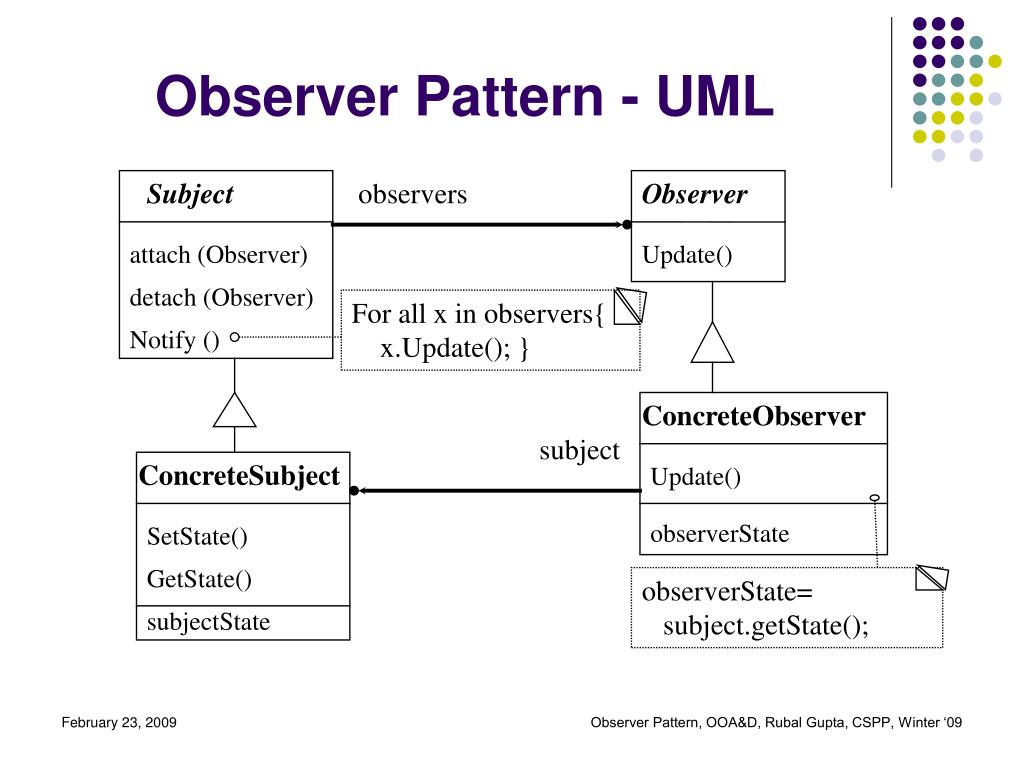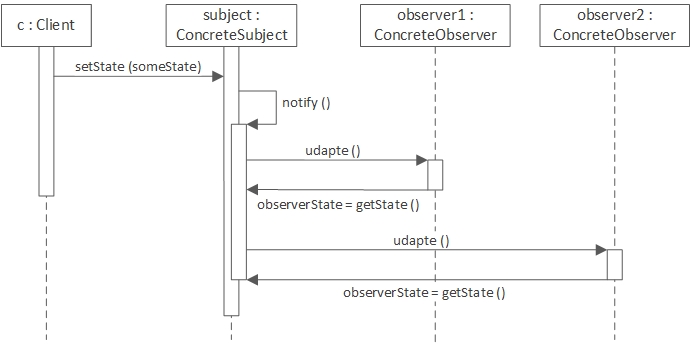
In other cases, there is no need to notify observers of an exception. Information on such exceptions can be passed to the observer. The provider should call the OnError method when it handles an exception that compromises its ability to provide updates. The provider should not expect or require that observers handle exceptions in any particular way. The provider must handle its own exceptions if it has any specific requirements. The provider should follow these best practices when handling exceptions and calling the OnError method: However, the OnNext method is designed to provide an observer with current or updated data, whereas the OnError method is designed to indicate that the provider is unable to provide valid data. The OnError method is intended as an informational message to observers, much like the IObserver.OnNext method. The Provider - Calling the OnError Method This affects how providers and observers handle exceptions in the observer design pattern. Handling Exceptionsīecause of the loose coupling between a data provider and an observer, exceptions in the observer design pattern are intended to be informational. Implementers should clearly call out when they impose additional requirements to avoid user confusion about the observer contract. Implementations that are not thread-safe should explicitly document that they are not.Īny additional guarantees have to be specified in a layer on top of the provider/observer contract. Typically, this involves using a concurrent collection or a lock. Because of this possibility, both the Subscribe and Dispose methods should be thread-safe.

In addition, because the provider/observer contract does not specify who is responsible for unsubscribing after the IObserver.OnCompleted callback method, the provider and observer may both try to remove the same member from the list. An observer can call these methods at any time. Typically, a provider implements the IObservable.Subscribe method by adding a particular observer to a subscriber list that is represented by some collection object, and it implements the IDisposable.Dispose method by removing a particular observer from the subscriber list. This topic describes the best practices that developers should follow when implementing the observer design pattern using these interfaces. The System.IObserver interface represents the observer. The System.IObservable interface represents the data provider, which is also responsible for providing an IDisposable implementation that lets observers unsubscribe from notifications. NET, the observer design pattern is implemented as a set of interfaces. The Subject object will register that Observer reference that will be used as a proxy to accede to the concrete Observer.Īctually, in C, every time you will need to implement an interface, you will need to use a proxy object registering your class along with the methods you want to implement.In. We are going to compose the class needed as Observer with an Observer object that will define a notify method and two references to the Concrete Observer and to the notify method of this Observer. In C, we cannot implement interfaces, therefore it’s not possible to declare a class as Subject or Observer.
#Observer pattern code
Now, we are going to modify the existing code in order to make it Observer compliant. You will need to setup an environment with this code ready: how-to-object-oriented-in-c Now, how do we implement this in our C environment In fact the observer pattern was first implemented in Smalltalk’s MVC based user interface framework. Observer is also a key part in the familiar MVC architectural pattern. It is mainly used to implement distributed event handling systems.
#Observer pattern software
The observer pattern is a software design pattern in which an object, called the subject, maintains a list of its dependents, called observers, and notifies them automatically of any state changes, usually by calling one of their methods. Enable multitasking, each Thread can be alerted in case of an event notified by an object,.



The computer will have to register to the webcam for incoming events. Everytime the webcam detects a movement we want the computer to be alerted. In our case of study, imagine that a webcam is plugged in the computer. For example, let’s say we have a thread listening to a socket, every time a message is provided to the listener we want to alert different thread that a message occured. The Observer pattern is useful when using event driven programming. How-To: implement an Observer Pattern using C


 0 kommentar(er)
0 kommentar(er)
